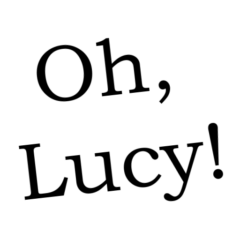My preoccupation with feminism in the USA led me to the question: What’s it like here, in Appenzell?
Continue reading “Feminism in Appenzell?”Category: Feminism
Oh, Lucy! Screening with live sound recording
In August 2022, I was wandering around New York and thinking out loud about conceptual art and feminism. Morena Barra accompanied me with her camera. Over the past few months, we have edited the footage and are now inviting you to a screening where the short film will be set to music live by Hannah Wirnsperger!
Continue reading “Oh, Lucy! Screening with live sound recording”Lucy R. Lippard about Conceptual Art and Feminism
INTERVIEW WITH LUCY R. LIPPARD
Continue reading “Lucy R. Lippard about Conceptual Art and Feminism”Catherine Morris about “Materializing Six Years”
INTERVIEW WITH CATHERINE MORRIS
Continue reading “Catherine Morris about “Materializing Six Years””!Women Art Revolution: Lynn Hershman Leeson
INTERVIEW WITH LYNN HERSHMAN LEESON
Continue reading “!Women Art Revolution: Lynn Hershman Leeson”Amy Smith-Stewart about “52 Artists: A Feminist Milestone”
INTERVIEW WITH AMY SMITH-STEWART
Continue reading “Amy Smith-Stewart about “52 Artists: A Feminist Milestone””Feminist initiatives of the 1970s in NY and LA
In the 1970s, art and society were on the move and Lucy Lippard was in the thick of it. An art critic, author, curator, and political and cultural activist, she helped found organizations such as the Ad Hoc Women’s Art Committee, the Art Workers Coalition or Heresies – and was involved in many other initiatives.
Continue reading “Feminist initiatives of the 1970s in NY and LA”HERESIES: A Feminist Magazine on Art and Politics
“Heresies” appears again and again in the correspondence of Lucy Lippard. In personal messages on postcards or in letters, it becomes clear: Heresies is an important, if grueling, project for all involved.
Continue reading “HERESIES: A Feminist Magazine on Art and Politics”National Museum of Women in the Arts: Since 1987
The opening of the National Museum of Women in the Arts in the summer of 1987 was met with controversy beforehand. It headlines the Washington City Paper: Feminism and the Art of Museum Maintenance; Wilhelma Holladay had – almost single-handedly – established the National Museum of Women in the Arts. So why aren’t feminist cheering?
Continue reading “National Museum of Women in the Arts: Since 1987”Archives of American Art: First Traces of Conceptual Art and Feminism in Lippard’s Papers
The Archives of American Art (AAA) is the world’s leading and most widely used research center for the visual arts in America. The institution is dedicated to collecting, preserving, and making accessible primary sources that document the history of visual art in America over the past 200 years.
Continue reading “Archives of American Art: First Traces of Conceptual Art and Feminism in Lippard’s Papers”